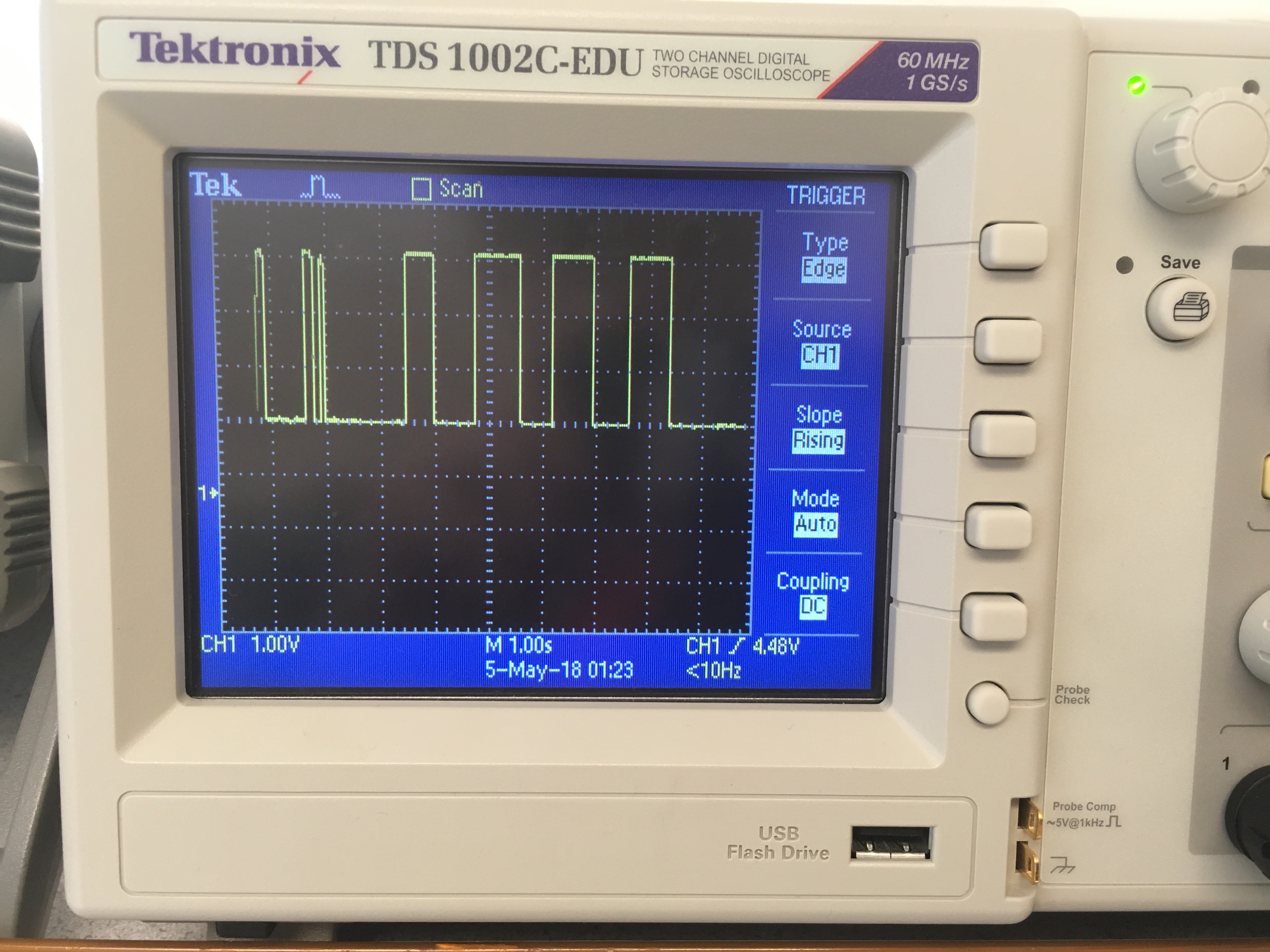Wednesday:
I continued my breadboard prototyping by trying to get my mic & filters to respond to a piezo speaker, however, no matter what gain on my filters I tried, I couldn't get a good response:

I was on the verge of giving up when Professor @Bruce Land suggested I use one of his "really loud" 24kHz ultrasonic transducers. This transducer showed much more promise than the piezo:


I could get a response on an oscilloscope even when the transducer wasn't playing at its 24kHz resonance frequency. I decided to re-tune my filters for 24kHz in order to take full advantage of the transducer's abilities.
Thursday:
I ran around in circles for several hours because I had accidentally shorted my voltage reference to ground. :(
Friday:
After re-tuning my filters and putting that signal through an envelope detector, amplifier, and comparator, I was able to get a fairly clean output that was either at 4.4V or 1.4V based on whether the transducer was playing or not. I could even get a range of about 2 meters (may try to improve this in latter designs) in the room with the occupancy sensors!


4.4V and 1.4V isn't quite a good digital signal, so I will probably put this through a Schmitt trigger as well. I could also use a differential drive on the transducer to increase the range a bit.
Here is the schematic I will probably use for the PCB I plan to design (I may start out with just designing small sensor modules instead of a full board with a microcontroller on it. This will make it easier to experiment with different microcontrollers):


 Joseph Primmer
Joseph Primmer
Discussions
Become a Hackaday.io Member
Create an account to leave a comment. Already have an account? Log In.